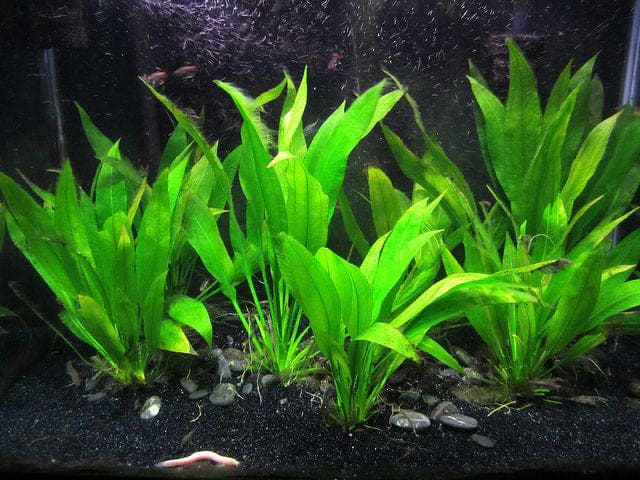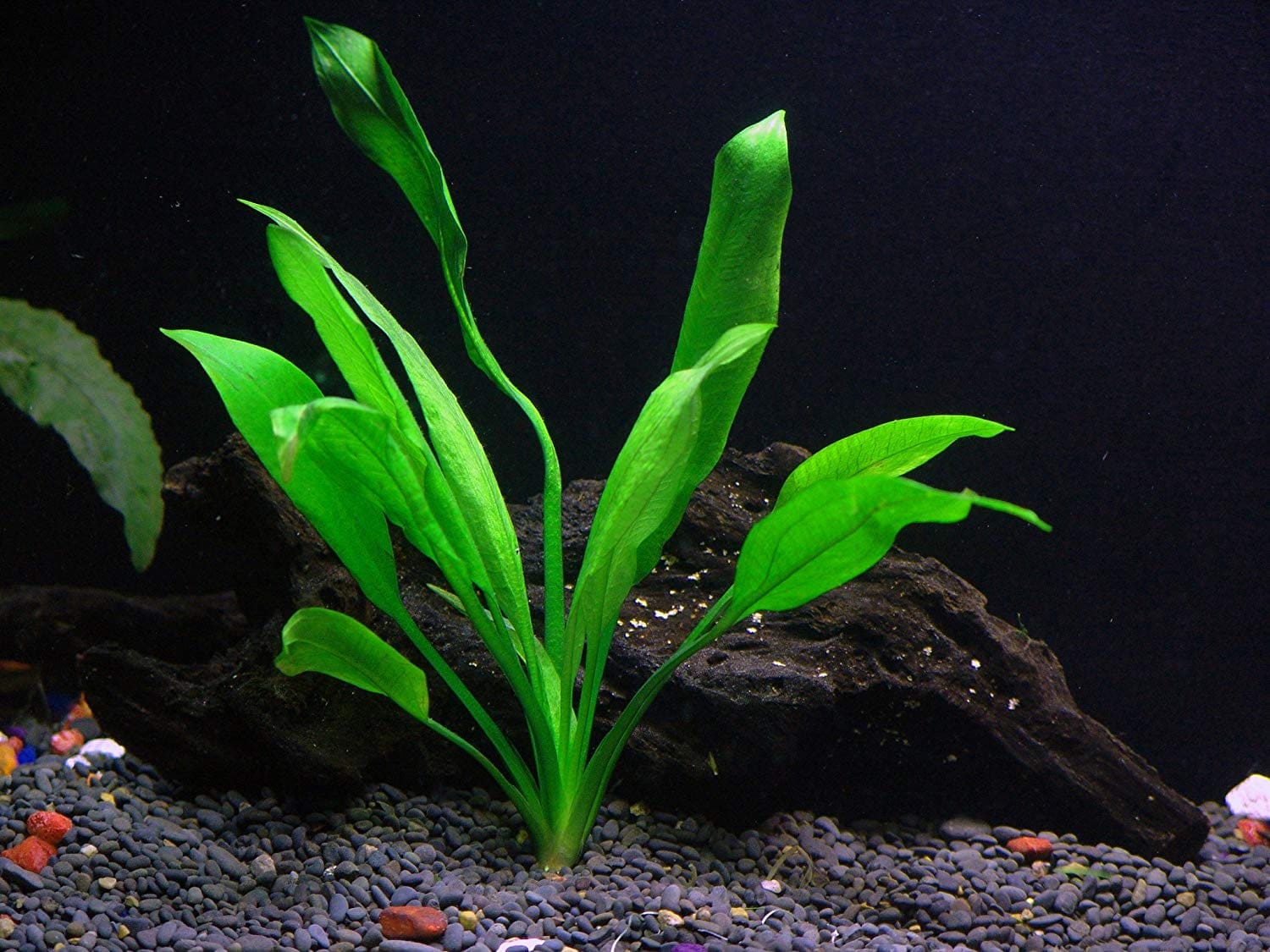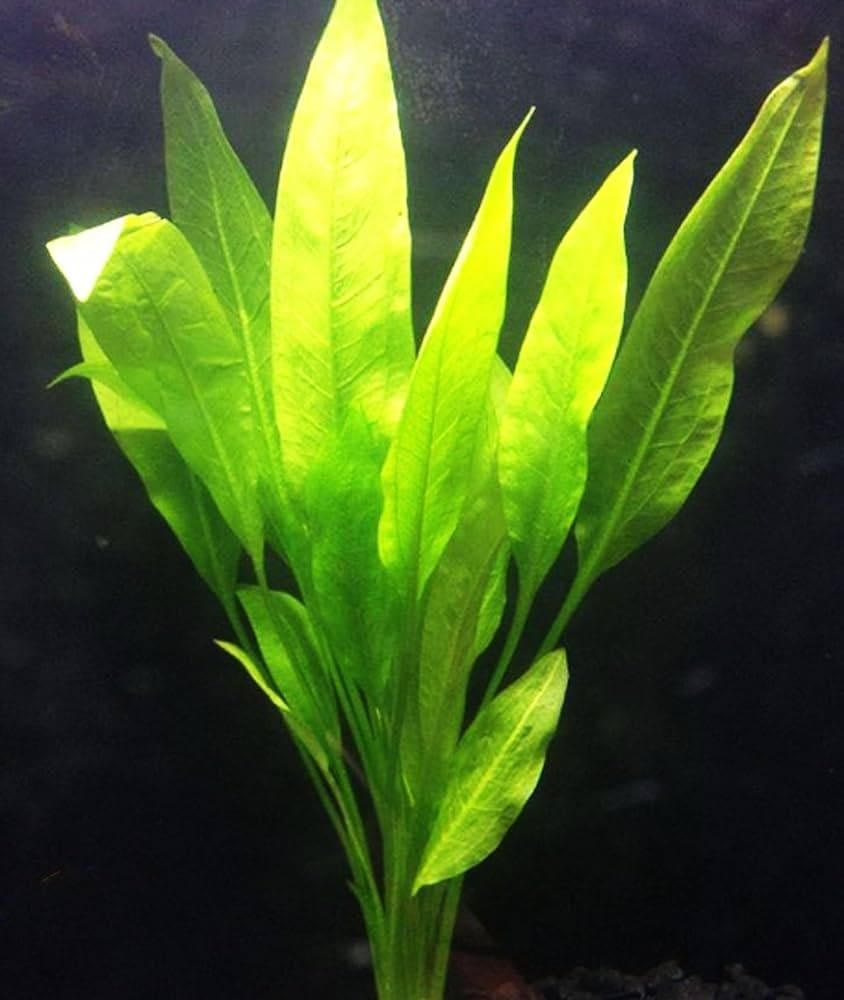The article “What Is The Aquatic Plant Long-leaf Sword Plant” presents a comprehensive exploration into the world of aquatic botany focusing on the intriguing long-leaf sword plant. Your understanding of this unique flora’s signs of optimal health, ideal nutrition, ecosystem influence, and cohabitation with aquarium species will be expanded. After reading this article, you will comprehend why the long-leaf sword plant is among the most captivating specimens in water gardening. Let the journey towards botanical enlightenment commence.
Identification of Long-leaf Sword Plant
The Long-leaf Sword Plant, scientifically known as Echinodorus argentinensis, is a popular fixture in aquatic environments. Its striking appearance, combined with its remarkable adaptability, make it a favorite among both amateur and professional aquarists.
Physical Characteristics
You’ll recognize the Long-leaf Sword Plant by its sleek, elongated leaves, which resemble ancient swords, hence the name. The leaves are generally linear in shape, tapering towards the ends. The vein patterns on the leaves are very distinct, appearing as a central nerve from which multiple lateral veins extend. The plant develops a robust root system that anchors it firmly in substrates.
Typical Size Range
This aquatic plant usually reaches a height range of 10-16 inches, although with optimal growing conditions, it can occasionally achieve a maximum height of 24 inches. The spread or width of mature plants usually varies between 10-12 inches.
Coloration
The coloration of this aquatic sword plant is typically a rich, vibrant green, varying from light to medium shades, depending on the intensity of the light it receives. Younger leaves tend to be the lighter green, darkening with maturity.
Natural Habitat of the Long-leaf Sword Plant
Geographic Range
The Long-leaf Sword Plant is native to South America, primarily found in Brazil’s riparian zones. Yet, given the plant’s adaptability, hobbyists across the globe now cultivate it.
Typical Water Conditions
In its natural habitat, the Long-leaf Sword Plant exists in a range of water conditions, from stable ponds to free-flowing streams. It can tolerate a broad spectrum of water parameters, including both mildly acidic and mildly alkaline waters. It tends to favor warmer water temperatures in the 22-27 degree Celsius range.
Interaction with Surrounding Flora and Fauna
Its thick foliage provides ideal hiding and breeding grounds for small aquatic creatures. In its native environment, it often grows in close proximity to other aquatic plants, contributing to the biodiversity and health of the ecosystem.

Growing Conditions for the Long-leaf Sword Plant
Water Temperature Requirements
The Long-leaf Sword Plant thrives in warmer water conditions, with an optimal temperature range between 22 and 27 degrees Celsius. However, the plant can survive and grow effectively at slightly cooler temperatures, making it adaptable to a range of environments.
Light Requirements
Your Long-leaf Sword Plant requires moderate to high light for optimal photosynthesis and growth, although it can survive in low-light conditions. Its coloration often becomes more pronounced under higher light intensities.
Soil or Substrate Preferences
While the Long-leaf Sword Plant can grow in a variety of substrates, it thrives best in nutrient-rich, loamy soils. The plant’s robust root system allows it to draw nutrients from the substrate, fostering overall growth and health.
Reproduction and Growth of the Long-leaf Sword Plant
Method of Propagation
This aquatic plant primarily propagates through adventitious plantlets growing from the parent plant’s roots. One can then separate these young plants when they develop their root system and plant them elsewhere.
Growth Rate
The growth rate of the Long-leaf Sword Plant is moderate to fast, with faster growth observed under ideal conditions. It can add several new leaves every month, developing a lush, dense bush over time.
Lifespan and Durability
The Long-leaf Sword Plant is a perennial plant that can live for several years under the right conditions. Its durability stems from its robust root system and resilience to various water parameters.

Cultivation of the Long-leaf Sword Plant in Home Aquaria
Common Tank Mates
Given its non-invasive nature, Long-leaf Sword Plant coexists well with a variety of fish species and other aquatic plants. It’s often seen in tanks with small to medium-sized fishes, such as tetras, guppies, and angelfish.
Impact on Aquarium Ecosystem
As a live plant, it provides shelter for aquatic animals and contributes to the oxygen content and overall balance of the aquarium. It serves as a bio-filter, absorbing excess nutrients, thereby limiting algae growth.
Difficulty Level for Aquarium Hobbyists
The Long-leaf Sword Plant is generally considered a beginner-friendly plant because of its adaptability to various conditions. Its rapid growth and easy propagation make it a popular choice for novice aquarium enthusiasts.
Potential Problems with the Long-leaf Sword Plant
Common Diseases and Pests
Like most aquatic plants, the Long-leaf Sword Plant is susceptible to algae infestation, especially in environments with excess nutrients or light. Snails might pose a problem too, particularly for young plants.
Treatments and Solutions
Algae infestations can often be managed through light regulation and decreasing nutrient levels in the water. Snails can be removed manually or through the introduction of predator species.
Preventative Measures
Proper care, including ideal lighting, regular feeding, and water changes can prevent most common diseases and pests. Avoid overcrowding the tank, which can stress the plant and create a breeding ground for diseases.

Special Varieties of Long-leaf Sword Plant
Cultivars and Hybrids
Over the years, several cultivars and hybrids of the Long-leaf Sword Plant have been developed, showcasing various sizes, shapes, and color variations.
Specially Bred Varieties for Aquaria
Certain varieties have been bred specifically for aquarium use, featuring traits such as a compact growth habit, brighter coloration, or unique leaf shapes.
Notable Differences from Standard Long-leaf Sword Plant
These special varieties often differ from the standard species in various ways, such as leaf shape, size, coloration, and growth habit. Nevertheless, they share the same basic care needs.
Maintenance and Care of the Long-leaf Sword Plant
Pruning Techniques
Regular pruning helps maintain the Long-leaf Sword Plant’s healthy appearance and prevents it from overshadowing other plants. Simply cut off any damaged or old leaves at the base using clean, sharp scissors.
Water Change Frequency
Performing regular water changes is essential to the health of all aquarium inhabitants, including the Long-leaf Sword Plant. A general recommendation is to change 10-20% of the water weekly.
Feeding and Nutritional Needs
The Long-leaf Sword Plant benefits from additional nutrient supplementation, particularly in the form of root tabs or substrate fertilizers.

Long-leaf Sword Plant and Aquascape Design
Design Applications for the Long-leaf Sword Plant
Due to its height, the Long-leaf Sword Plant is often employed as a background or focal point in aquascaping designs. Its vibrant green coloration and graceful leaves add depth and aesthetic appeal.
Pairing with Other Plants and Decor
This plant pairs well with a variety of other aquatic plants, particularly those with contrasting leaf shapes or colors. It can also harmonize well with various kinds of decor, including rocks, driftwood, and other natural elements.
Creating Visual Interest
Planting the Long-leaf Sword Plant in groups can create a stunning visual impact. Alternatively, its striking form can also draw attention when used as a singular, specimen plant.
Historical and Cultural Significance of the Long-leaf Sword Plant
Use in Traditional Medicine or Rituals
While primarily viewed as an ornamental plant, some indigenous communities in South America have used the Long-leaf Sword Plant in traditional medicine or rituals, typically as a provider of protection.
Symbolic Meanings
In some cultures, the Long-leaf Sword Plant symbolizes endurance and resilience, primarily due to its ability to thrive in diverse conditions.
Historical References and Significance
Historically, the plant’s sword-like leaves and robust structure have often been associated with strength and power. Its lush greenery and tranquil natural habitat have made it an emblem of peace and serenity in some cultures.
